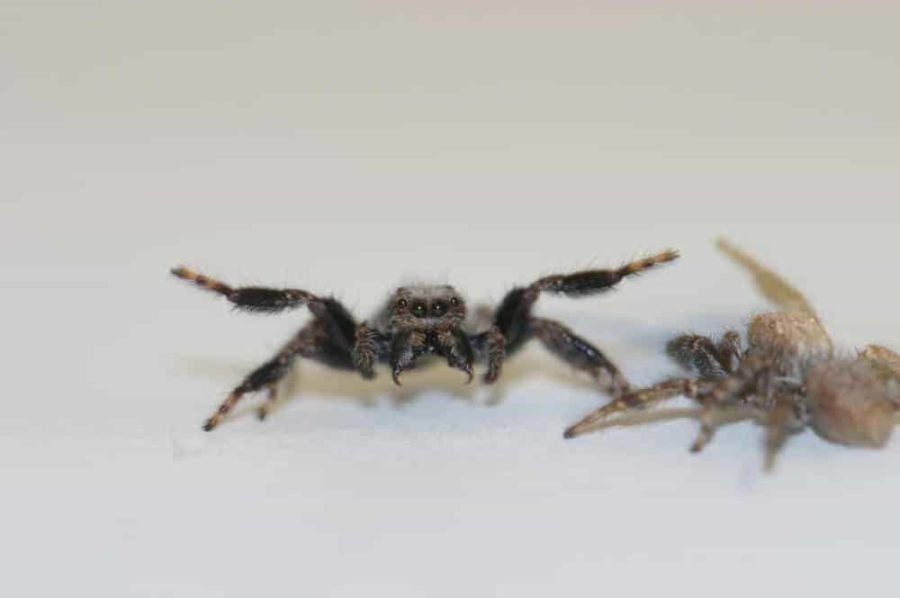Jumping spiders are known for their excellent vision and the elaborate body language they display when encountering other members of their species. These attributes may enable them to visually size up a potential opponent and decide whether to step away from a possible fight even before it starts. However, in live fights, jumping spiders may have limited opportunity to show this skill. This is according to Rowan McGinley and Phillip Taylor of Macquarie University in Sydney, Australia. Their findings are published in Springer’s journal Behavioral Ecology and Sociobiology.
To limit possible injury or worse, some animals first jostle a bit with an opponent before deciding whether to withdraw from a fight. Previous studies involving staged contests between jumping spiders suggest that these arachnids follow a different strategy. They seem to pull out when they reach a pre-set cost threshold. Hence, smaller spiders are less likely to take part in escalated contests irrespective of their opponent’s size.
McGinley and Taylor turned to the Australian species Servaea incana to further test whether and how the behaviour of individual jumping spiders differs in response to their opponent’s size. Adult Servaea incana males differ significantly in size, with the largest ones growing to be twice the size of smaller ones.
© Rowan McGinleyMcGinley and Taylor utilised video playback techniques, which have previously been used with jumping spiders to study aspects of courtship and predation. They first filmed various spiders that were displaying at their own reflection in a one-way mirror. These images were then manipulated to reflect four different sized Servaea incana – from dwarflike to gigantic in spider terms. The manipulated images were then shown to 81 males. The researchers noted whether they approached the screen within three centimetres or displayed at the videoed opponent.
They found that the chances of a spider displaying at and approaching a videoed opponent depend on both its own size and that of the video ‘opponent’. Spiders were least likely to approach the largest video opponents and the larger a spider was, the more likely it was to approach any given filmed rival. In addition, spiders were least likely to display towards videoed spiders that were significantly smaller or larger than themselves.
However, jumping spiders seem not to pay attention to the size of their opponents in real fights. In live situations, spiders may not have the same opportunity to make such assessments. The results suggest that if large spiders display towards small spiders, the small spider will be more likely retreat. But large spiders don’t always display. If small spiders display towards large opponents, the large opponents may approach without advertising their large size. This indicates that the costs and benefits of opponent assessment may depend on an animal’s own fighting ability; large spiders don’t need to scare away tiny opponents, while small spiders can’t scare away large opponents and may put themselves at risk if they try.
“Their slow visual system and the dynamic behaviour of the opponents during contests may reduce opportunities for visual assessment to the point where individual size-associated tendencies come to dominate decisions of persistence, escalation and retreat,” explain McGinley and Taylor in their study.


